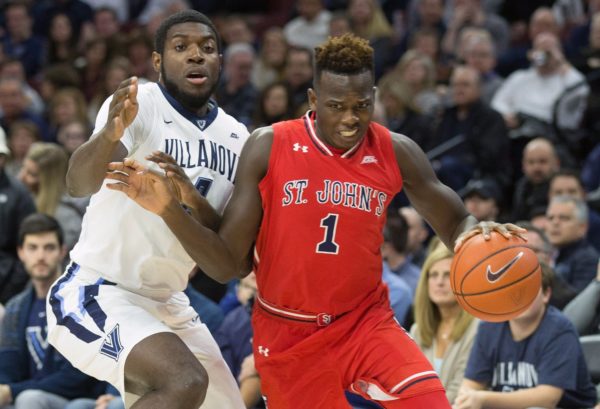St. John’s Bashir Ahmed Represents a Tradeoff Between Efficiency and Intangibles
Posted by Justin Kundrat on February 15th, 2017St. John’s head coach Chris Mullin has the luxury of being able to construct a wide variety of lineups, but a curious dilemma arises when one of his most important players is also his least efficient. His roster has lightning-quick, penetrating guards, floor-stretching shooters and a handful of ultra-athletic big men who can defend the post and rebound, but he only has one Bashir Ahmed. Most of his other players, no matter how talented, are limited to specific positions. Guards Marcus LoVett, Jr. and Shamorie Ponds stand at 6’0″ and 6’1″, respectively. Swingman Malik Ellison is a defensive specialist. And shot blocker Tariq Owens is tremendous in his role protecting the paint, but he is generally confined to putbacks on the offensive end of the floor. That leaves Ahmed, a 6’7″ JuCo transfer who possesses great talent combined with a penchant for iffy decision-making.
Ahmed is aggressive in attacking the basket, savvy enough to draw contact in the lane, and athletic enough to challenge most defenders — all highly desirable attributes in a small forward. But when combined with an ingrained habit of unabashedly exerting his will against good defenses, the result is too many turnovers and missed shots. As the below table shows, Ahmed lags behind the other Red Storm rotation players in just about every shooting category.

Subpar shooting isn’t the only thing that damages St. John’s offense. His assist-to-turnover rate (two miscues for every assist) is disastrous considering that his usage rate of 26.5 percent ranks highest on the team. If Ahmed’s season-long statistics aren’t damning enough, the below graphic summarizes Ahmed’s possessions against Seton Hall last Saturday. In short, nine of Ahmed’s 14 possessions resulted in turnovers or missed shots (all of which were off-balance or contested).

It’s certainly no wonder that St. John’s offensive efficiency drops eight points per 100 possessions when Ahmed is on the floor, but that doesn’t change the fact that Mullin needs his junior wing in the lineup. The threat of Ahmed is a greater weapon than his actual production because — as the team’s only reliable scorer over 6’1″ — he forces defenses to pay attention to him. He’s a “volume scorer” in the sense that he needs a lot of possessions to make an impact, but his defender (as well as any help) doesn’t get many possessions off. He represents a flash of versatility on a bipolar team of small guards and big forwards, and his presence is essential in mending the gap.











































